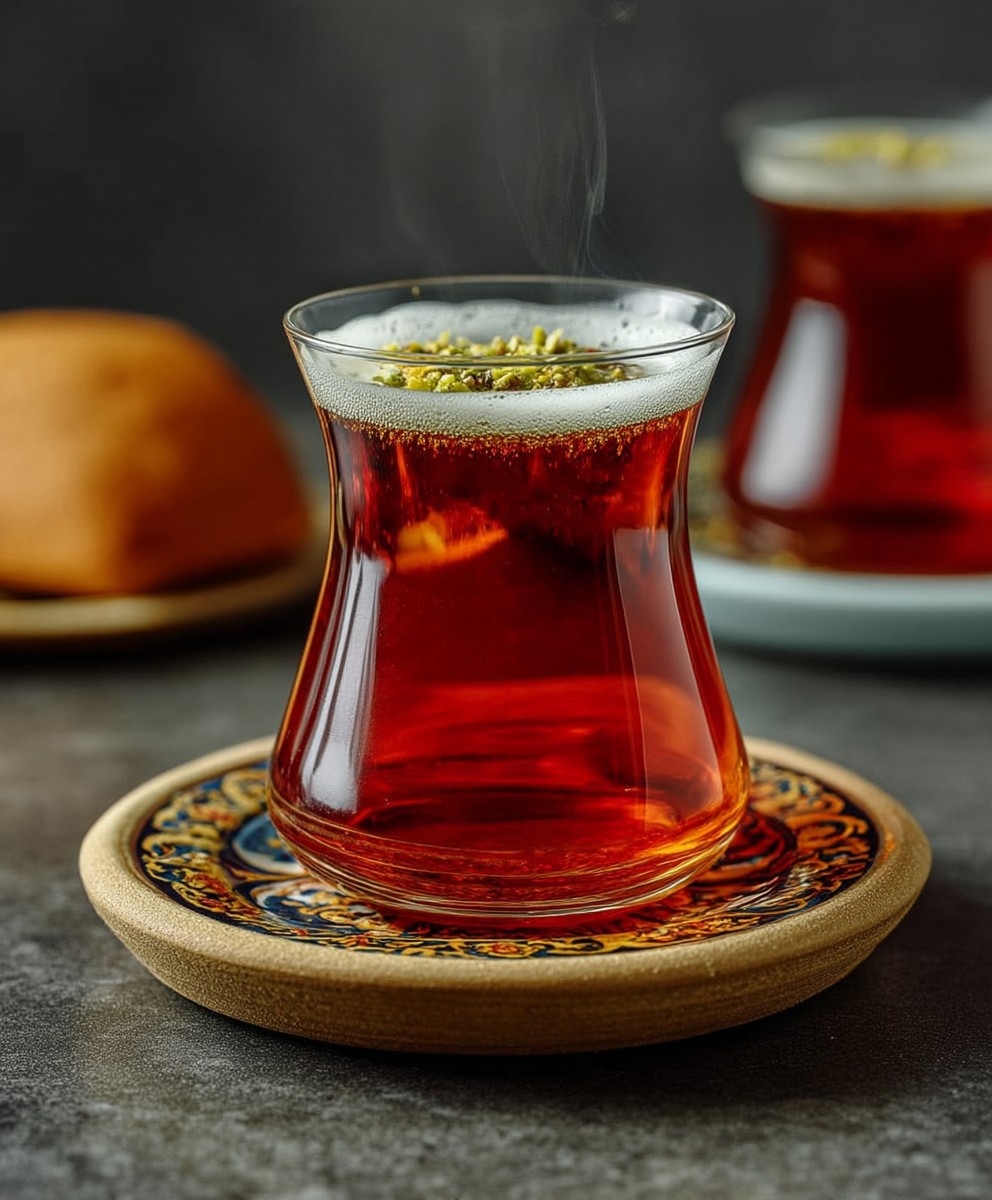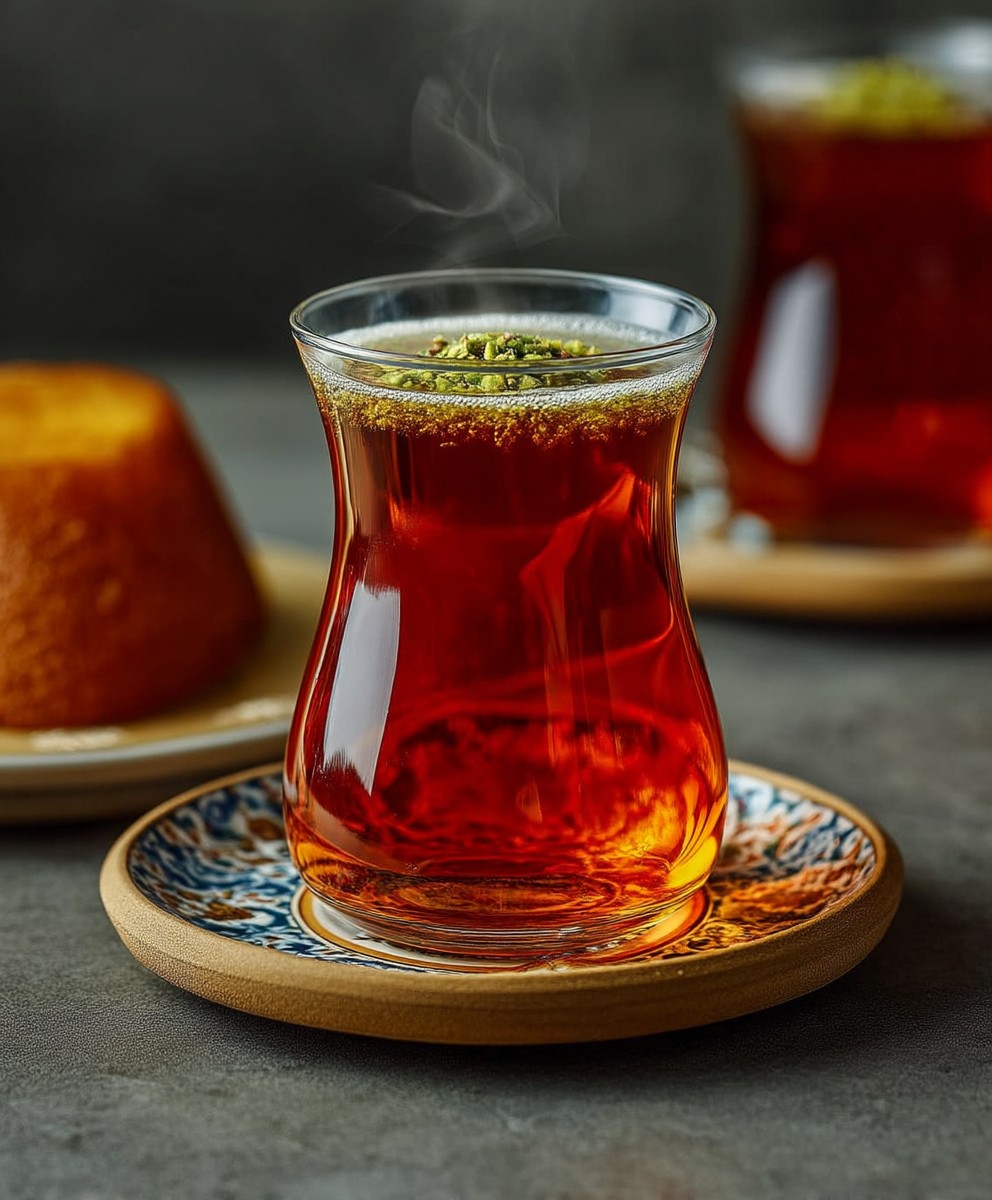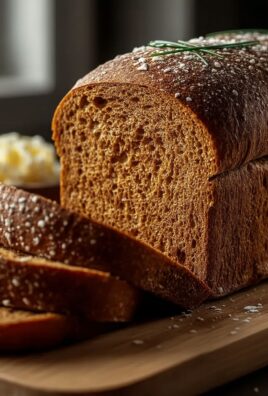Turkish Tea, or “çay” as it’s lovingly called in Turkey, is more than just a beverage; it’s a cultural cornerstone, a symbol of hospitality, and a daily ritual deeply woven into the fabric of Turkish life. Imagine yourself transported to a bustling Istanbul bazaar, the air thick with the aroma of spices and the melodic calls of vendors, all punctuated by the clinking of delicate tulip-shaped glasses filled with steaming, ruby-red tea.
The history of Turkish tea is relatively recent, gaining popularity in the 20th century as an alternative to coffee. Today, it’s ubiquitous, offered freely in homes, shops, and even during business meetings. It’s a gesture of welcome, a sign of friendship, and an essential part of any social interaction.
But what makes Turkish Tea so beloved? It’s the unique brewing method, using a double teapot called a “çaydanl?k,” that allows for a concentrated tea essence to be diluted to each person’s preference. The taste is robust yet refreshing, slightly bitter but perfectly balanced, and incredibly satisfying. Beyond the flavor, it’s the experience the warmth of the glass in your hand, the shared conversation, and the feeling of connection that makes Turkish tea so special. Join me as we explore the art of brewing the perfect cup of Turkish tea, bringing a taste of Turkey into your own home.

Ingredients:
- 8 cups of cold, filtered water
- 4 tablespoons of loose leaf Turkish black tea (çaykur or similar)
- Sugar cubes, to taste
- Optional: Lemon slices, for serving
Preparing the Turkish Tea (Çay)
Making authentic Turkish tea is a bit of an art, but don’t worry, I’ll guide you through it! The key is using a double teapot, called a “çaydanl?k.” The bottom pot is for boiling water, and the top pot is for brewing a strong tea concentrate. This concentrate is then diluted with hot water in your glass, allowing everyone to customize the strength of their tea.
- Fill the Bottom Teapot: Start by filling the larger, bottom teapot (the “alt demlik”) with 8 cups of cold, filtered water. Using filtered water is important because it helps prevent mineral buildup in your teapot and ensures a cleaner, purer tea flavor.
- Place on the Stove: Put the bottom teapot on the stove over high heat and bring the water to a rolling boil. This might take a few minutes, so be patient.
- Prepare the Top Teapot: While the water is heating, rinse the smaller, top teapot (the “üst demlik”) with hot water. This pre-warms the teapot, which helps maintain a consistent brewing temperature. Discard the rinse water.
- Add the Tea Leaves: Add 4 tablespoons of loose leaf Turkish black tea to the warmed top teapot. The amount of tea can be adjusted slightly to your preference, but this is a good starting point. I prefer a strong brew, so I sometimes add a little extra!
- Pour Boiling Water Over the Tea: Once the water in the bottom teapot is boiling vigorously, carefully pour about 2 cups of the boiling water over the tea leaves in the top teapot. Be careful not to overfill the top teapot; leave some room for expansion.
- Refill the Bottom Teapot: Now, refill the bottom teapot with more cold, filtered water. This ensures you have enough hot water to dilute the tea concentrate later.
- Stack the Teapots: Carefully place the top teapot (containing the tea leaves and hot water) on top of the bottom teapot. The steam from the boiling water in the bottom teapot will gently heat the tea leaves in the top teapot, allowing them to steep properly.
- Reduce Heat and Brew: Reduce the heat to low and let the tea brew for at least 15-20 minutes. This is crucial for developing the rich, complex flavor of Turkish tea. The longer it brews, the stronger the tea will be. I usually let mine brew for closer to 25 minutes.
Serving the Turkish Tea
Serving Turkish tea is just as important as brewing it! It’s traditionally served in small, tulip-shaped glasses, which allow you to appreciate the color and aroma of the tea. The tea is poured in a specific way to achieve the perfect balance of strength and flavor.
- Pour the Tea Concentrate: First, pour a small amount of the strong tea concentrate from the top teapot into the bottom of the tulip glass. The amount of concentrate you pour depends on how strong you like your tea. A good starting point is about 1/4 to 1/3 of the glass.
- Dilute with Hot Water: Next, carefully pour hot water from the bottom teapot into the glass to fill it the rest of the way. The goal is to create a tea that is a rich, reddish-brown color. If the tea is too dark, it’s too strong; if it’s too light, it’s too weak. Adjust the amount of concentrate and hot water until you achieve the desired color and strength.
- Add Sugar: Turkish tea is traditionally served with sugar cubes. Add as many sugar cubes as you like to sweeten the tea to your taste. I usually use two or three, but some people prefer more!
- Stir and Enjoy: Stir the tea gently to dissolve the sugar. Be careful not to spill any, as the glasses can get quite hot. Now, take a sip and enjoy the rich, flavorful experience of authentic Turkish tea!
- Offer Lemon (Optional): Some people enjoy adding a slice of lemon to their Turkish tea for a bit of brightness and acidity. This is entirely optional, but it can be a nice addition, especially on a warm day.
- Refill and Repeat: Turkish tea is meant to be enjoyed slowly and savored. Don’t be afraid to refill your glass and adjust the strength of the tea to your liking. It’s all part of the experience!
Tips for Perfect Turkish Tea
Here are a few extra tips to help you make the perfect cup of Turkish tea every time:
- Use High-Quality Tea: The quality of the tea leaves will significantly impact the flavor of your tea. Look for loose leaf Turkish black tea from a reputable brand like Çaykur or Do?adan.
- Adjust the Brewing Time: The brewing time is crucial for developing the flavor of the tea. Experiment with different brewing times to find the perfect balance of strength and bitterness for your taste.
- Keep the Water Hot: Make sure the water in the bottom teapot stays hot throughout the brewing and serving process. This will help maintain the temperature of the tea and prevent it from becoming bitter.
- Clean Your Teapot Regularly: Mineral buildup can affect the flavor of your tea. Clean your teapot regularly with a mixture of water and vinegar to remove any buildup.
- Experiment with Different Teas: While traditional Turkish tea is made with black tea, you can experiment with other types of tea, such as herbal teas or fruit teas. Just be sure to adjust the brewing time and amount of tea accordingly.
- Serve with Turkish Delights: For an authentic Turkish experience, serve your tea with Turkish delights (lokum) or other traditional Turkish sweets.
Troubleshooting
Sometimes, things don’t go exactly as planned. Here are a few common problems and how to fix them:
- Tea is Too Bitter: If your tea is too bitter, it may be over-brewed. Try reducing the brewing time or using less tea leaves. Also, make sure you’re using filtered water, as minerals in tap water can contribute to bitterness.
- Tea is Too Weak: If your tea is too weak, it may not have brewed long enough. Try increasing the brewing time or using more tea leaves. Also, make sure the water in the bottom teapot is hot enough.
- Tea is Cloudy: Cloudy tea can be caused by hard water or over-brewing. Try using filtered water and reducing the brewing time.
- Teapot is Leaking: If your teapot is leaking, make sure the two parts are properly aligned. If the leak persists, you may need to replace the teapot.
Enjoying the Ritual
Making and drinking Turkish tea is more than just a beverage; it’s a social ritual. It’s a time to relax, connect with friends and family, and enjoy the simple pleasures of life. So, take your time, savor the flavor, and enjoy the experience!
I hope you enjoy making and drinking Turkish tea as much as I do! Afiyet olsun (Bon appétit)!

Conclusion:
Well, there you have it! I truly believe this Turkish Tea recipe is a must-try for anyone looking to add a touch of warmth and tradition to their day. It’s more than just a beverage; it’s an experience, a ritual, and a delicious way to connect with a rich cultural heritage. The deep, robust flavor, the beautiful amber color, and the simple elegance of the preparation make it a standout among other teas. It’s the perfect pick-me-up in the afternoon, a comforting companion on a chilly evening, or a delightful way to impress guests with something a little different.
But why is it *really* a must-try? Because it’s incredibly versatile! While traditionally served in tulip-shaped glasses without milk, don’t be afraid to experiment. A squeeze of lemon can brighten the flavor, especially if you find the tea a bit strong. For a sweeter treat, add a small sugar cube or a drizzle of honey. I personally love to pair it with a slice of baklava or some Turkish delight for an authentic and indulgent experience.
And speaking of variations, feel free to adjust the tea-to-water ratio to suit your personal preference. If you prefer a milder brew, use a little less tea. If you like it strong and bold, add a bit more. The beauty of this recipe is that it’s easily customizable. You can also experiment with different types of Turkish tea. While the classic black tea is the most common, there are variations with added bergamot or other spices that can add a unique twist.
Serving suggestions? Oh, the possibilities are endless! Imagine serving this Turkish Tea at your next brunch, alongside a spread of cheeses, olives, and fresh bread. Or picture yourself enjoying a cup on your balcony, watching the sunset and savoring the moment. It’s also a fantastic addition to any afternoon tea party, adding a touch of exotic flair. And don’t forget the presentation! The tulip-shaped glasses are not just for show; they enhance the aroma and the overall drinking experience. If you don’t have tulip glasses, any small, clear glass will do.
I’m so excited for you to try this recipe and discover the magic of Turkish Tea for yourself. It’s a simple recipe, but it yields such a rewarding and flavorful result. I’ve been making it for years, and it never fails to bring a smile to my face.
So, what are you waiting for? Gather your ingredients, follow the steps, and prepare to be transported to the bustling tea houses of Istanbul. I promise you won’t be disappointed.
And most importantly, I’d love to hear about your experience! Did you try any variations? What did you pair it with? Did you find it as comforting and delicious as I do? Please, share your thoughts and photos in the comments below. I’m always eager to learn from your experiences and see how you’ve made this recipe your own. Let’s create a community of Turkish Tea lovers! Happy brewing!
Chocolate Puff Pastry: A Delicious & Easy Dessert Recipe
Authentic Turkish Tea (Çay) brewed in a traditional double teapot. A strong tea concentrate is diluted with hot water for a customizable and flavorful experience.
Ingredients
- 8 cups cold, filtered water
- 4 tablespoons loose leaf Turkish black tea (Çaykur or similar)
- Sugar cubes, to taste
- Optional: Lemon slices, for serving
Instructions
- Fill the Bottom Teapot: Fill the larger, bottom teapot (the “alt demlik”) with 8 cups of cold, filtered water.
- Place on the Stove: Put the bottom teapot on the stove over high heat and bring the water to a rolling boil.
- Prepare the Top Teapot: While the water is heating, rinse the smaller, top teapot (the “üst demlik”) with hot water. Discard the rinse water.
- Add the Tea Leaves: Add 4 tablespoons of loose leaf Turkish black tea to the warmed top teapot.
- Pour Boiling Water Over the Tea: Once the water in the bottom teapot is boiling vigorously, carefully pour about 2 cups of the boiling water over the tea leaves in the top teapot.
- Refill the Bottom Teapot: Refill the bottom teapot with more cold, filtered water.
- Stack the Teapots: Carefully place the top teapot (containing the tea leaves and hot water) on top of the bottom teapot.
- Reduce Heat and Brew: Reduce the heat to low and let the tea brew for at least 15-25 minutes.
- Pour the Tea Concentrate: Pour a small amount of the strong tea concentrate from the top teapot into the bottom of a tulip glass (about 1/4 to 1/3 of the glass).
- Dilute with Hot Water: Carefully pour hot water from the bottom teapot into the glass to fill it the rest of the way. Adjust the amount of concentrate and hot water until you achieve the desired color and strength.
- Add Sugar: Add sugar cubes to taste.
- Stir and Enjoy: Stir the tea gently to dissolve the sugar.
- Offer Lemon (Optional): Serve with a slice of lemon, if desired.
- Refill and Repeat: Refill your glass and adjust the strength of the tea to your liking.
Notes
- Use high-quality Turkish black tea for the best flavor.
- Adjust the brewing time to your preference. Longer brewing times result in stronger tea.
- Keep the water in the bottom teapot hot throughout the brewing and serving process.
- Clean your teapot regularly to prevent mineral buildup.
- Serve with Turkish delights for an authentic experience.
- If the tea is too bitter, reduce the brewing time or use less tea.
- If the tea is too weak, increase the brewing time or use more tea.
- Traditionally served in tulip-shaped glasses.




Leave a Comment